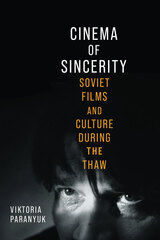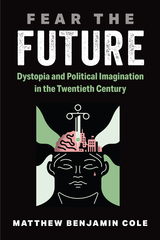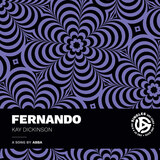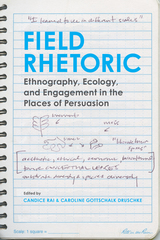
Using both theory and close readings of specific films produced in the Soviet Union during the Thaw, a period known for its relative political and cultural liberalization, Cinema of Sincerity treats sincerity as both a concept and an aesthetic strategy. Viktoria Paranyuk argues that Soviet cinema’s use of sincerity was a reworking of a trend in global cinema that sought to bridge the gap between reality and the filmed image. This period saw increased accessibility to world cinematic traditions, new voices in criticism, and, above all, the multigenerational effort in filmmaking that developed and thrived in centers outside Moscow. Paranyuk demonstrates how these changes allowed Soviet cinema to renew its visual language and use film as a space for collective self-examination.

“A powerful diagram of the moral life from Shakespeare to the present...a book crowded with insights.”—Geoffrey Hartman, New York Times
One of the twentieth century’s foremost literary critics traces the idea of the self across five hundred years of Western cultural history.
“One cannot both be sincere and seem so,” André Gide once wrote. Attempting to inhabit sincerity to satisfy social expectations makes it into a posture or a persona—a self-defeating enterprise. What, then, does the oft-repeated injunction to “be yourself” really mean?
In his 1969–1970 Norton Lectures, Lionel Trilling argues that this simple piece of advice has been the source of centuries of moral perplexity. In Elizabethan England, being true to oneself was seen as a means to an end. “To thine own self be true,” Polonius famously advised Laertes in Hamlet, “And it must follow, as the night the day / Thou canst not then be false to any man.” But this vision of the “honest soul,” whose pursuit of self-knowledge brings harmony with external society, gradually collapsed under the weight of modern literature and philosophy. Drawing a line from Rousseau, Robespierre, and Jane Austen through Hegel, Freud, and Joseph Conrad, Trilling brilliantly shows how sincerity was displaced by the more strenuous ideal of authenticity, in which genuine selfhood became a product of alienation and negation, a ceaseless purge of both social artifice and self-deception. In his final lectures, he presciently notes the rising embrace of deliberate inauthenticity, a development that rapidly accelerated after his death.
Moving fluidly between philosophy, literature, cultural history, and psychoanalysis, Sincerity and Authenticity is a bravura performance, unraveling our labors of self-definition with the wit and effortless sophistication that made Trilling a foremost literary critic of the twentieth century.

This book presents not just the Romantic Wordsworth, but Wordsworth as part of a large historical movement in poetry, beginning in the eighteenth century and continuing to the present day. It concentrates on the difficult, much discussed, but little analyzed problem of "sincerity" in poetry, which it treats both critically and historically, as a demand relatively new in Wordsworth's time and still with us. It contains an extended criticism of Wordsworth's later poems, and explores the vexing question of why the mode of his poetry changed as he grew older.
The author shows that the ideal of sincerity has influenced poets, critics, and common readers from Wordsworth to now, and describes the problems raised for poets by this new challenge. The first problem is the adequacy of language--does the very structure and fact of language stand as an obstacle to a complete sincerity? Perkins says: "One can hardly explain the history of poetic style or, indeed, of literature since Wordsworth, unless one keeps in mind that there has been a continuing mistrust of language. By words, it is feared, we chop realities into categories. The categories are arbitrary, or, even if they are not, their generality strips our experience of its unique aspects."
Another problem raised by the challenge of sincerity is the distrust of poetic form. How can you write with a personal sincerity when you have to use meters and stanzas? Or, more fundamentally, how can you be honest to the complexity and uncertainty of your own experience, when a poem must always be more limited than the consciousness from which it arises? Still another problem is the distrust of poetic conventions and traditions. The author says, "The wish to be sincere is challenged and baffled by the fact that poetry is a learned performance, that all poetic expression depends on traditions and conventions peculiar to the art and inherited from the past...Yet if you imitate the great achievements of the past, how can your poem be thought a sincere personal utterance? The question of imitation is only the most obvious result of this anxiety. For a fanatic sincerity may suppose that merely to be influenced by other writers--in fact, to be influenced by anything at all--somehow clouds the purity of self-expression."
READERS
Browse our collection.
PUBLISHERS
See BiblioVault's publisher services.
STUDENT SERVICES
Files for college accessibility offices.
UChicago Accessibility Resources
home | accessibility | search | about | contact us
BiblioVault ® 2001 - 2025
The University of Chicago Press









